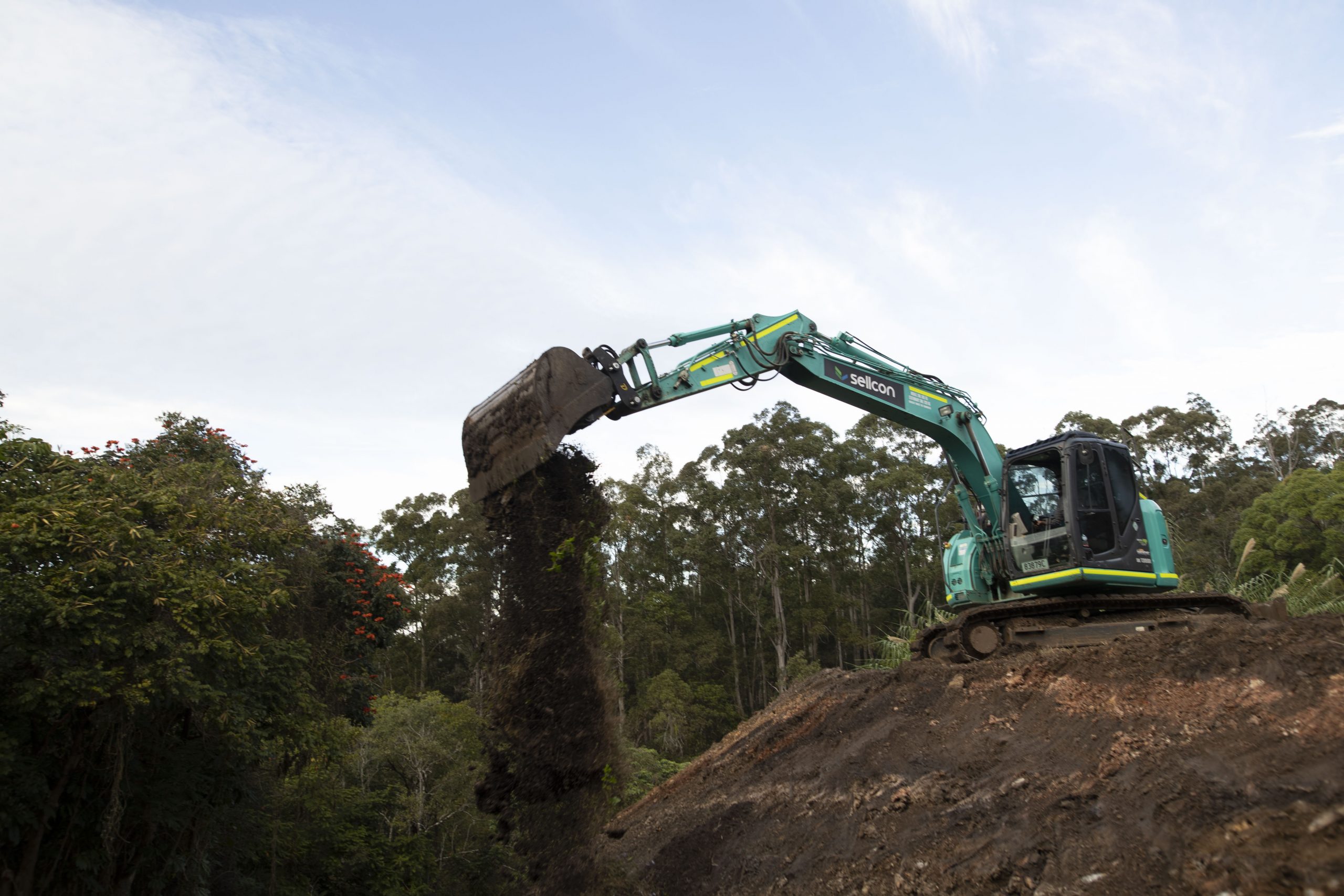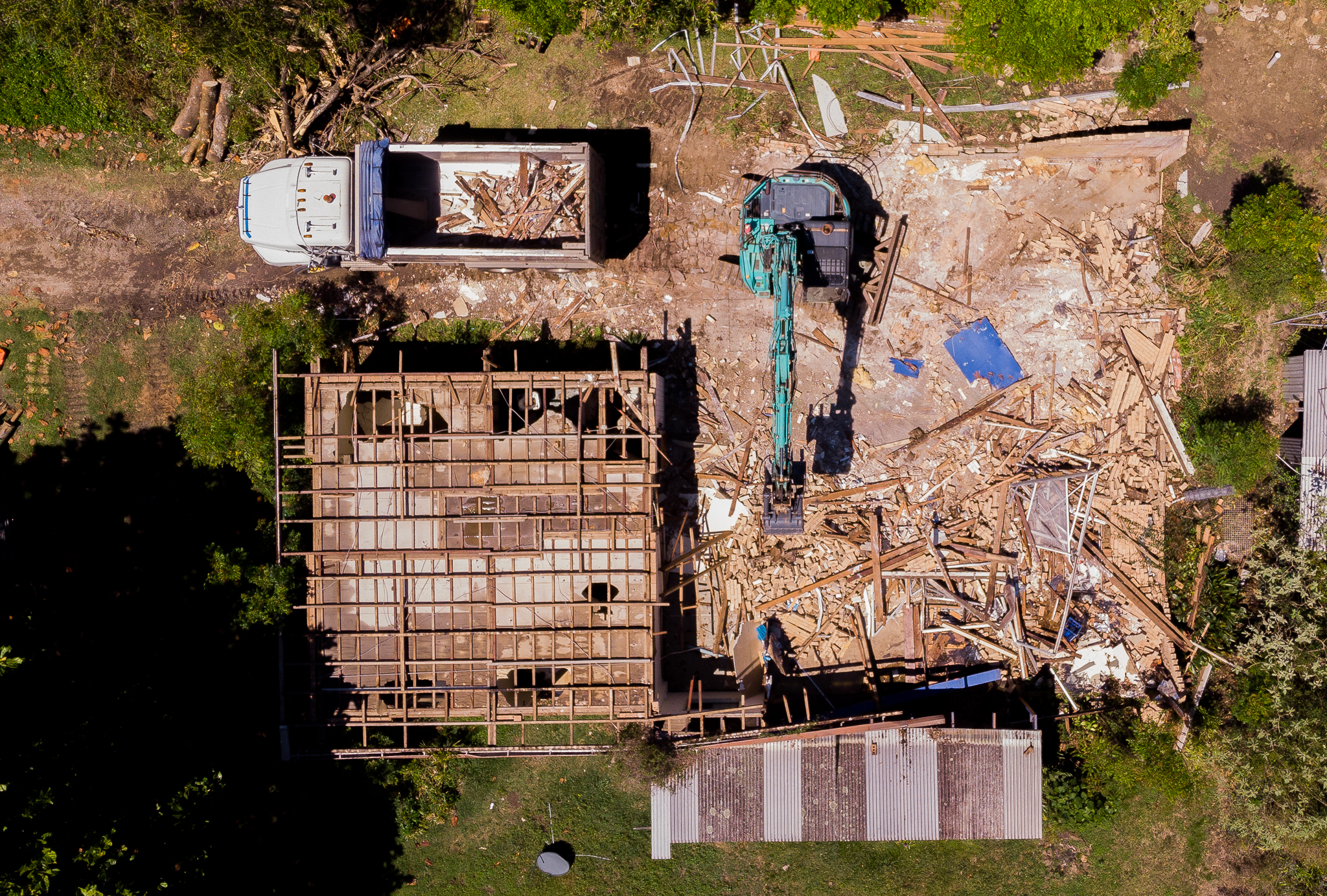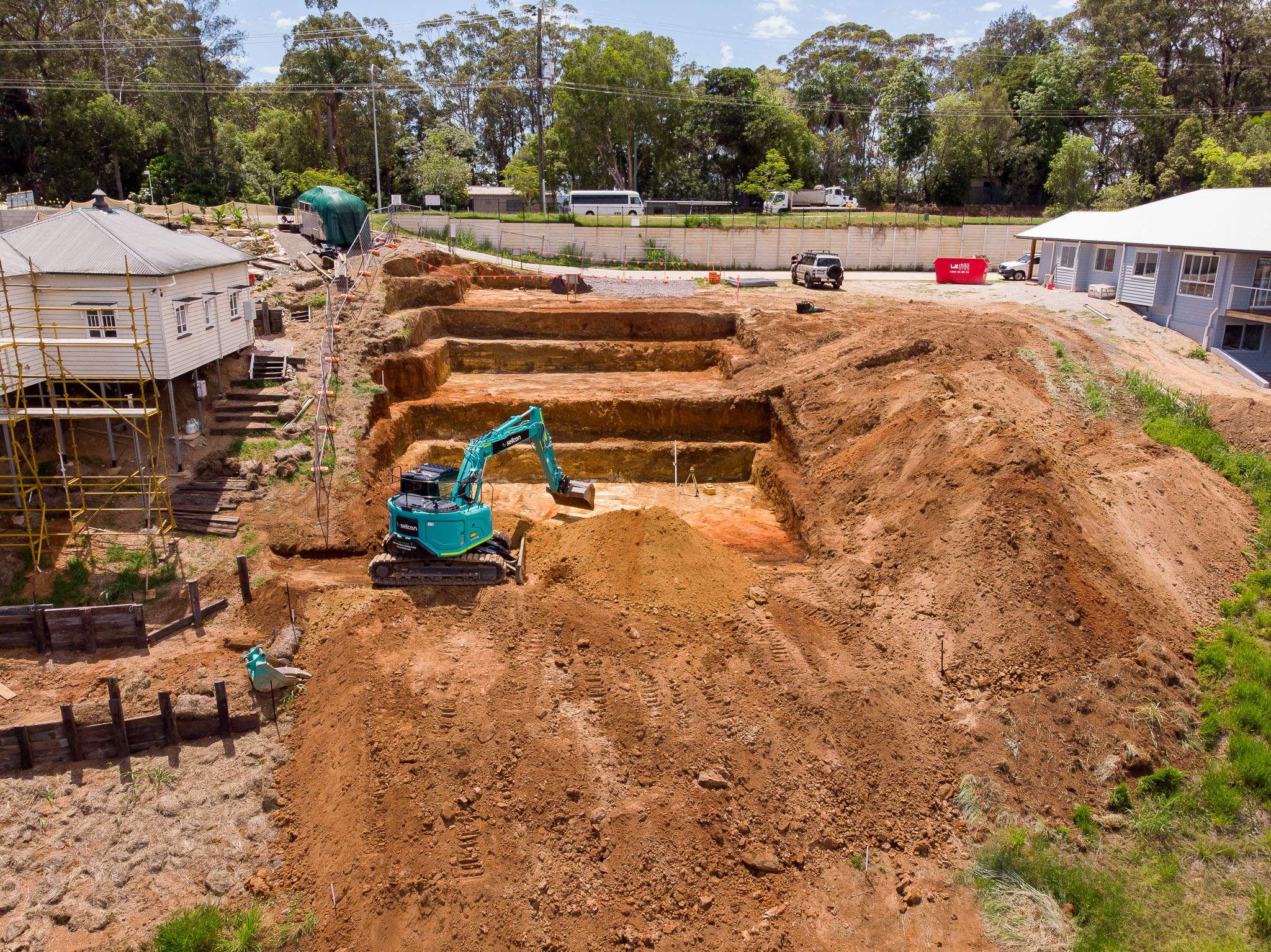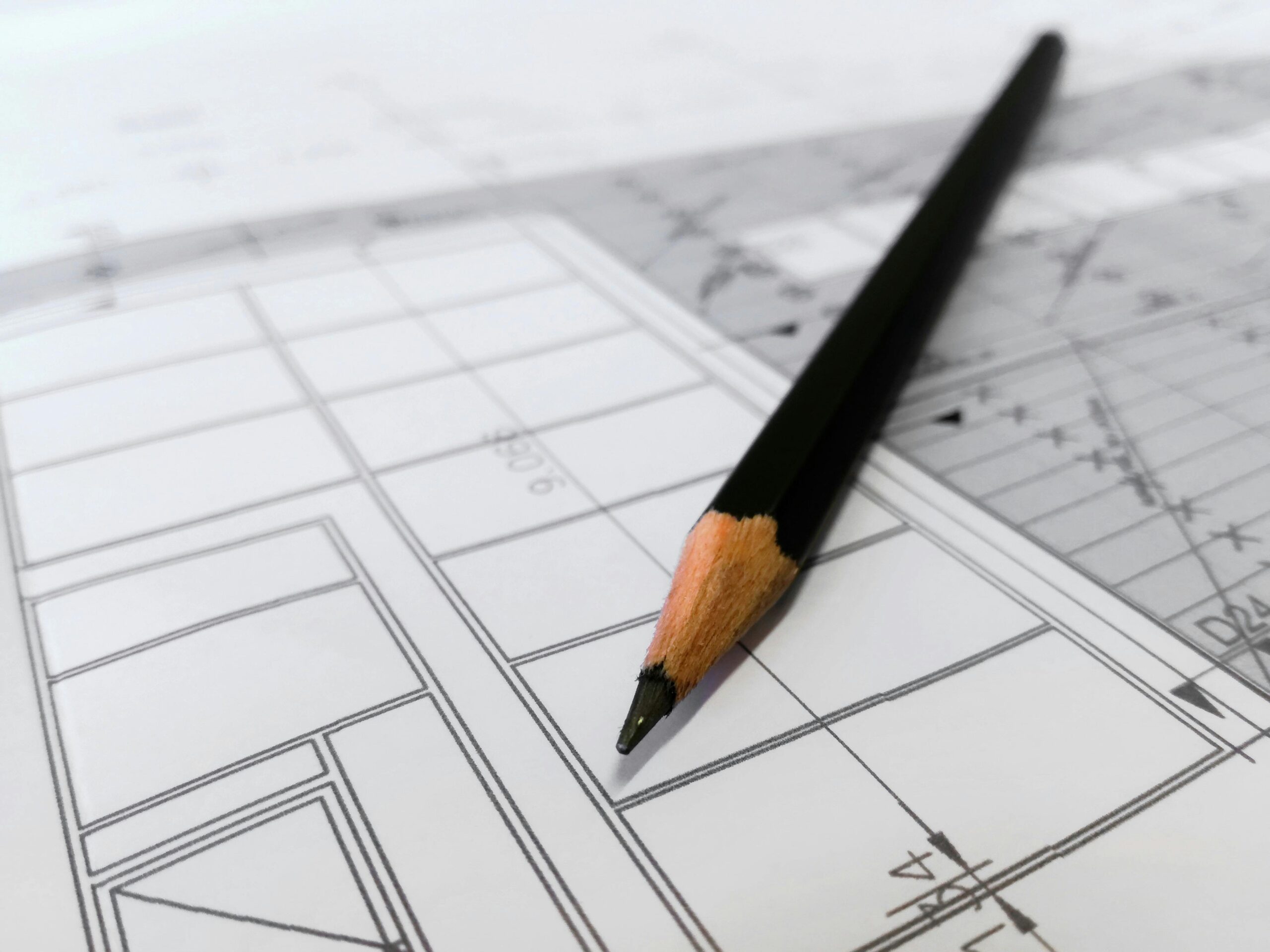Partial demolition sounds simple. After all, you're only removing part of the structure, right? However,…

What Factors Contribute to The Cost of a Demolition?
House demolition costs might shock many homeowners. Tearing down a residential property can cost between $12,000 and $50,000. Several elements affect the final price tag a lot.
The price can jump to $40,000 or more based on the property’s unique needs. Brisbane homeowners pay between $20,000 and $30,000. Prices in other locations change based on local rules and market rates.
The exact cost of house demolition varies widely. Each property comes with its own set of challenges. The building’s size and structure matter. Hazardous materials like asbestos add roughly $50 per square meter to remove. Site access and demolition methods are vital factors that shape the final cost.
This piece breaks down what drives demolition costs. You’ll learn about price ranges for different house sizes, square meter calculations, and hidden costs. Homeowners should know these details before they start a demolition project.
Average Cost to Demolish a House
Australian demolition market prices vary based on many factors. Homeowners need to understand these cost elements to budget their projects accurately.
Typical price range by house size
Property size plays a crucial role in determining demolition costs. The bigger the house, the more you’ll pay due to increased labour, equipment, and disposal needs.
Small houses (up to 100-150 square meters) can be relatively affordable. The price for medium-sized homes (100-200 square meters) typically costs more, while larger properties over 200 square meters can be significantly more expensive.
Homeowners with an average three-to-four-bedroom home should expect to pay between AUD 23,000 and AUD 47,000. All the same, final costs depend on factors beyond size, such as building materials and site accessibility.
Cost per square meter explained
Most demolition companies prefer quoting prices per square meter instead of flat rates. This method helps provide more accurate estimates based on the property’s exact size.
Demolition costs per square meter in Australia range from AUD 60 to AUD 250. This price spread shows how building materials, location, and project complexity affect the final cost.
How location affects pricing
Your property’s location has a big effect on demolition costs across Australia. Urban areas cost more than regional or rural locations for several reasons.
Major cities like Sydney, Melbourne, and Brisbane have higher demolition costs due to increased labour rates, tougher regulations, and steeper waste disposal fees.
Urban properties often pose challenges for heavy machinery and disposal trucks, which drives up costs. Limited space to operate equipment and manage debris adds to the expenses.
Rural properties might have lower labour costs, but they face extra expenses for equipment and material transport. Disposal costs can add up, especially when the property sits far from waste management facilities.
Each region’s local council has different regulations and permit requirements. These variations affect both project timelines and demolition costs throughout Australia.
Key Factors That Influence Demolition Costs
Several key factors determine the cost of demolishing a residential structure. Knowing these elements helps homeowners plan their budget and steer clear of surprise costs.
Size and structure of the house
The dimensions and complexity of your property shape demolition costs. Bigger houses need more labour, equipment, and time for complete dismantling. You can demolish a small single-story home in just a couple of days. A multi-story building might take weeks or months, which drives up the costs.
Your home’s structural complexity matters just as much. Houses with unique designs or special architectural features need careful planning and execution. Properties that have basements, concrete foundations, or multiple levels need special equipment and expertise, which leads to higher costs.
Type of materials used
Your home’s construction materials directly shape how hard and expensive it is to demolish. Wood structures cost less and are easier to take down than those built with heavier materials. Brick, concrete, or steel buildings need specialised machinery and create heavy waste that costs more to move and dispose of.
Material weight affects transportation costs. Concrete and brick create bulky debris with higher tipping and transport fees at landfill sites. Wood and aluminium cost less because crews can often salvage and recycle them.
Presence of hazardous materials like asbestos
Hazardous materials – especially asbestos – can drive up demolition costs. Houses built between 1920 and 1990 often have asbestos in their walls, ceilings, flooring, or external cladding. Licensed professionals must remove asbestos following strict safety rules. This can add a significant amount to your total cost.
Accessibility of the site
Your site’s accessibility plays a big role in cost. Properties on steep blocks, narrow streets, or with limited access create challenges for equipment operation and waste removal. Tough terrain might need smaller machines, more manual labour, or cranes to remove materials, which increases costs.
Houses in busy urban areas need traffic management plans, noise control, and limited working hours that add to the total cost. Your property’s distance from other buildings also affects the demolition approach and safety measures needed.
Demolition method chosen
Your choice of demolition technique affects the final price. Mechanical demolition with excavators and bulldozers offers the quickest and most budget-friendly approach for complete demolitions. This method creates more waste but usually costs less than other approaches.
Manual deconstruction takes more time and money upfront because it needs more labour. This method lets crews recycle materials like timber, bricks, and metals, which can offset some costs through resale. Most projects end up using both methods to balance cost, time, and sustainability.
Types of Demolition and Their Cost Impact
The right demolition method you choose will affect your final cost and project timeline. Each demolition approach serves a specific purpose and comes with different price tags for property owners.
Full demolition vs. partial demolition
Full demolition removes an entire structure and creates a clean slate for new construction. Partial demolition takes a different approach by targeting specific sections while keeping other parts of the building intact.
You’ll pay more per square meter for partial demolition than for full demolition because it needs more precision. It takes skilled professionals to remove certain elements without damaging others. Partial demolition works best for renovation projects where you only want to modify specific rooms or when local rules limit changes to the exterior.
Manual deconstruction vs. mechanical demolition
Manual deconstruction breaks down a structure piece by piece using hand tools. This method gives you better control and precision, but takes longer and needs more workers. It creates less noise and vibration, which makes it perfect for busy neighbourhoods.
Mechanical demolition uses heavy machinery like excavators and bulldozers to tear down buildings quickly. This method costs less than manual deconstruction and needs fewer workers on site. Most of your money goes to equipment rental instead of labour costs.
Sustainable demolition options
Green demolition techniques aim to reduce environmental impact through material recovery and waste reduction. These methods include:
- Selective dismantling: Taking out specific building parts to reuse or recycle them
- Deconstruction: Taking buildings apart carefully to keep materials in good shape
- On-site recycling: Processing materials like concrete right at the project site
Green demolition projects can keep more than 90% of waste out of landfills. While this approach costs more upfront due to extra labour, it can save money through lower disposal fees and material resale. Rising landfill fees across Australia make waste diversion an attractive option financially.
The construction and demolition industry uses about 40% of global energy and resources, which makes green practices valuable for both environmental and financial reasons.
Permits and Legal Requirements
Getting through the permit maze is a crucial part of planning any demolition project. The costs of permits make up a big part of your demolition budget, right alongside equipment and labour costs.
What permits are needed
You must get demolition permits anywhere in Australia, though requirements differ based on your state and local council. Most areas need a standard demolition permit for structural removal work. Different building classes need different permits – homes and small structures (Class 1 and 10) face simpler rules than commercial buildings (Class 2-9).
New South Wales offers two types of demolition licenses: restricted and unrestricted. You’ll need an unrestricted license for buildings taller than 15 meters, chemical installations, or projects that need special demolition methods. Restricted licenses cover buildings between 6-15 meters that affect how weight is supported.
Some areas need extra permits to remove asbestos, particularly in homes built from 1920 to 1990. You must also file disconnection notices with your utility companies before starting any work.
How much do permits typically cost
Permit prices change based on where you are in Australia. Simple demolition permits start at around AUD 145 for basic assessments and go up to AUD 320 for Class 1 and 10 buildings. Commercial building permits cost more with each floor.
Steps to apply for demolition approval
Most applications take 7-14 days to process. Here’s what you need to do:
- Prepare required documentation, including:
- Three copies of site plans clearly indicating demolition areas
- Property title certificate
- Contractor registration and insurance details
- Waste disposal procedures
- Submit application forms to the local council or through online portals where available
- Pay the prescribed application fees
- Notify relevant utility providers about disconnection requirements
- For properties containing asbestos, engage licensed asbestos removal contractors
- Upon approval, display permit copies at the demolition site
- Schedule inspections as required by local authorities
Larger demolition projects need public liability insurance certificates, workers’ compensation documents, and safe work method statements. Working without proper permits can lead to heavy fines.
Hidden and Additional Costs to Watch For
Homeowners should plan their budget beyond basic demolition costs. Several overlooked expenses can substantially affect the total project cost.
Utility disconnection fees
Property owners must get their utilities permanently disconnected before starting demolition. This process, known as “abolishment”, involves more than turning off services. A temporary power disconnection leaves live current between the meter and the street, which creates serious electrocution risks. The power network needs to physically remove the meter and supply cable after receiving an order from the electricity retailer. These services come with fees that show up on your final utility bills. Licensed electricians must decommission any solar panels or batteries before the process begins.
Tree and stump removal
Standard demolition quotes often exclude tree removal costs. You’ll need council approval to clear any vegetation. Stump grinding prices vary based on size. The final price depends on stump accessibility, tree species, and root complexity. Your location matters too.
Soil contamination and remediation
Teams might find contaminated soil during demolition, which leads to major extra costs. Previous industrial use, heavy fertiliser use, chemical disposal, or fuel leaks can cause this contamination. You’ll need to pay for testing and monitoring after removal.
Unexpected structural issues
Demolition remains one of the most dangerous construction activities. Problems can arise when contractors don’t fully understand a building’s structural principles. Yes, it is surprising that removing small components like a nut on a threaded steel rod can make the remaining structure unstable. Buildings can collapse catastrophically without a proper structural engineering assessment. These situations often require extra reinforcement or different demolition methods, which increase costs and extend the timeline.
Conclusion
Knocking down a house is way more complex and expensive than most homeowners first expect. The final cost depends on many factors that work together. A house’s size is the biggest factor that drives up the cost. Bigger properties need more resources, time and workers to demolish. The building materials also play a vital role – brick and concrete structures cost more to remove than wooden ones.
Where your property is located affects the price a lot. Labour rates, disposal fees, and rules vary in different parts of Australia. You should get multiple quotes from your area before you start. Having hazardous materials, especially asbestos, can make costs skyrocket because of special removal and disposal needs.
Your choice of demolition method affects the final cost, too. Mechanical demolition is a budget-friendly option for complete removal. Manual deconstruction is more sustainable but costs more upfront. Whatever method you pick, you’ll need proper permits and must follow local rules. This adds time and money to the process.
Don’t forget about the less obvious costs. Disconnecting utilities, removing trees, fixing soil issues, and dealing with surprise structural problems can add thousands to your bill. Good planning and complete budgeting are the foundations of a successful demolition project.
If you’re thinking about demolishing your house, do your homework first. Get detailed quotes from licensed contractors and set aside an extra 10-15% for unexpected costs. The right preparation can turn a potentially stressful project into an exciting first step toward building something new.
If you still have questions or are after more information, please don’t hesitate to contact our team here at Sellcon today.
FAQs
Q1. What are the main factors that influence demolition costs?
The primary factors affecting demolition costs include the size and structure of the house, types of materials used in construction, the presence of hazardous materials like asbestos, site accessibility, and the chosen demolition method. Location also plays a significant role in pricing due to varying labour rates and disposal fees across different regions.
Q2. How does the presence of hazardous materials impact demolition expenses?
Hazardous materials, particularly asbestos, can significantly increase demolition costs. Asbestos removal requires licensed professionals and strict safety protocols, potentially adding thousands of dollars to the overall expense. The cost varies depending on the extent of asbestos present.
Q3. What permits are required for house demolition, and how much do they cost?
Demolition permits are mandatory across Australia, with requirements varying by state and local council. Basic demolition permits can cost between $145 and $320 for residential buildings. Additional permits may be needed for asbestos removal or utility disconnections. Costs can increase for commercial structures or retrospective approvals.
Q4. Are there any hidden costs to be aware of when planning a demolition?
Yes, several often-overlooked costs can impact the total project expenditure. These include utility disconnection fees, tree and stump removal expenses, soil contamination remediation if discovered, and costs associated with unexpected structural issues. It’s advisable to budget an additional 10-15% for these potential hidden expenses.
Q5. How does the chosen demolition method affect the overall cost?
The demolition method significantly impacts the final price. Mechanical demolition using heavy machinery is generally faster and more cost-effective for complete demolitions. Manual deconstruction, while more expensive initially due to its labour-intensive nature, allows for material salvage and recycling, potentially offsetting some costs. The choice often depends on factors like project timeline, budget, and sustainability goals.



